By now a lot of beer drinkers have probably heard of PicoBrew, the Seattle-based company that introduced the first all-grain brewing appliance. They recently released the Pico C, the smallest and most affordable of their brewing machines. Seriously, it’s the size of a microwave oven, sits on your counter and makes beer. Cool. Last month I test drove a Pico C. Here’s my report.
I should add, if you’re thinking of giving yourself or someone else a Pico C for Christmas, PicoBrew says that December 15th is the last day you can order one and get it, guaranteed, in time for the big day. You’ll have to take that up with them; I am not at all affiliated with the company.
It has become increasingly popular in our society to make things. People often refer to this social phenomenon as the “maker culture.” It’s an extension of the Do It Yourself (DIY) culture. PicoBrew and the Pico C fit perfectly into that world. The Pico C starts at $449, a special deal happening right now. Learn more at https://www.picobrew.com/.
For the sake of disclosure, I want to clarify that I was not paid to write this post. They wanted me to do a story about the Pico C and I couldn’t do that without actually using it. In a true instance of “careful what you ask for,” they obliged and sent me a Pico C to test drive. As a recovering homebrewer (hello, my name is Kendall. “Hi Kendall!”), I was actually a pretty good person to put this thing through its paces. I am well acquainted with the process, the pains and the pleasures of home brewing.
My ultimate conclusion is pretty simple. If this sounds like the kind of thing you’d like, then you will like it. If you’re looking for a real, or complete, brewing experience, you probably won’t. If you want to make your own beer but don’t want to dive headfirst into the deep waters of home brewing, which requires you to purchase a lot of equipment and learn a lot of stuff, then the Pico C is perfect. If you want to sit around with other home brewers comparing notes about original gravity, flocculation rates, and fermentation temperatures, you probably won’t like the Pico C.
I’ve heard some people refer to PicoBrew as the Keurig of beer. That is not really a fair or accurate comparison. The Pico C allows you to make beer without needing to understand all the science behind the craft, but it does not replace or skip the science and it does not eliminate any steps in the process, it just automates a lot of the steps.
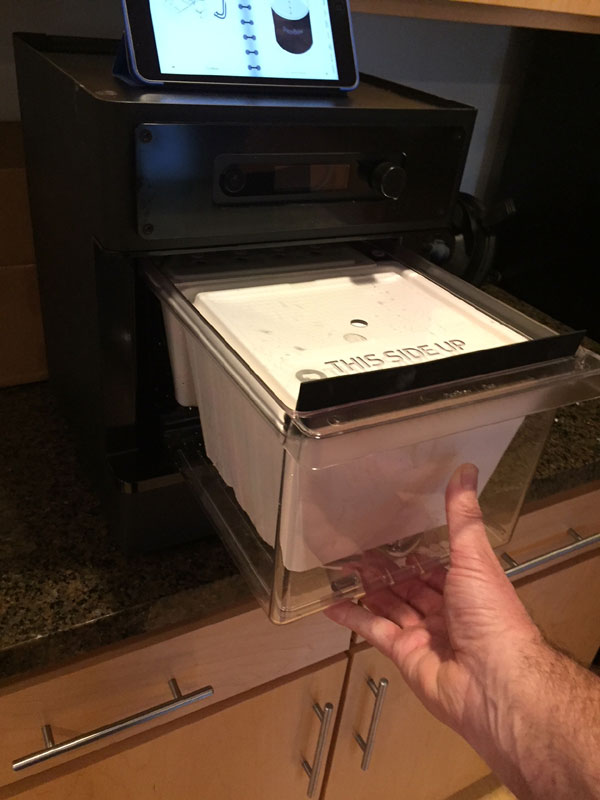
Where the Pico C does resemble a Keurig coffee maker is in the PicoPak. Your grains and your hops are provided in a package that, in concept at least, resembles a much larger version of one of those little Keurig pods. That’s a really simplified version of the truth, but like I said, in concept at least.
The Pico C recognizes what PicoPak you’re using (say, a PicoPak for a particular IPA or a particular Stout) and knows how to proceed with making that beer. It knows the mash temperature and mashing time. It knows when to add the hops—early addition hops, late addition hops and so on. It knows everything. It’s a really smart machine on its own, but it is even smarter when it talks to the master brain at PicoBrew. It connects to your WiFi network and phones home as needed. After brewing, toss the used PicoPak in with your compost.
Each PicoPak is based on a recipe. Some of these recipes were developed by the brewers at PicoBrew, others were developed by craft breweries. There are dozens of PicoPaks from which to choose, representing several different versions of the most popular beer styles. Each PicoPak costs roughly $20 – $30. You can even design your own PicoPak.
Among the beers I brewed were an IPA based on a recipe from Rooftop Brewing, a Pale Ale based on a recipe from Flying Bike Brewing, and a PicoBrew light-bodied lager. When I say recipe, not only do I mean the grains and the hops, but also things like mash temperature and timing, hop addition timing, and so on. It’s all automated and it happens like magic when the Pico C talks to the PicoPak.
Sitting next to the Pico C, connected by hoses, is the brewing keg. Once the brewing process is complete, this vessel also acts as your fermentation tank. Once the beer is done fermenting, in approximately 7 days, you transfer the beer to the serving keg.
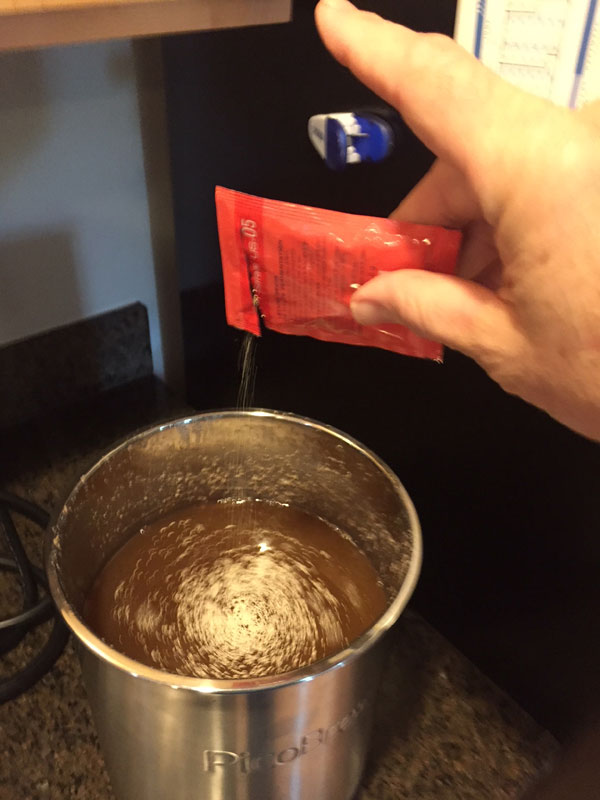
There are two methods available for carbonating the beer. First is natural carbonation—you add some priming sugar to the keg and then let it rest for up to seven days. The other involves a forced carbonation unit. Basically, it’s a little CO2 tank and regulator that attaches to the serving keg. The second method is much faster, allowing you to start drinking your beer after just a couple days, but I found the traditional method provided better results. The beers that I forced carbonated turned out a bit too volatile (over carbonated). Granted, there could have been some user error.
The process takes a few hours. The hands-free brewing process takes the Pico C about two to three hours once you’ve pushed the button, depending on the recipe. There are other hands-on things to do that add up to maybe another hour—like pitching the yeast, racking the beer, cleaning up and so on.
In the end, the beer is real beer. It is not instant beer and it is not like home brewing with extract. Brewing with the Pico C is way more sophisticated than that. All the beers that I brewed were good, maybe as good as any home brew I ever made back in the day. To be honest, the beers were not mind-blowing, but I was new to the process and only made three beers. I assume you get better with experience.
Here’s what I liked:
As a homebrewer, I grew weary of cleaning and sanitizing my equipment. It becomes an obsession because you know that any slipups in your cleaning process can cost you a batch of beer. The Pico C makes that part of the process much easier. There is still some stuff you must sanitize by hand, but being able to run a cleaning cycle at the push of a button is a joy.
I like the fact that the Pico C is able to accomplish some pretty complicated brewing processes so easily. For instance, a multi-step mash is pretty sophisticated stuff for a home brewer. For the Pico C, such a process is no problem at all: it does whatever the recipe calls for. You can see it happening on the display screen, which tells you exactly what’s happening and at what temperature.
Using the Pico C to rack your beer (transfer it) from the fermentation keg to the serving keg is super easy. Totally awesome. Way better than the way I used to do it as a home brewer.
Maybe the coolest thing about the Pico C is the ability to design your own beers. Sure, it’s great to get a recipe from a brewery you know and trust, but you can literally build your own beer, deciding what percentage of what grains you want to use and what kind of hops you want to use for the different hop additions. Granted, there are some limitations, but it’s still pretty darn cool that you can modify recipes to suit your own tastes. This is probably of most use to people who know a thing or two about brewing and have actually built beer recipes before. Still, very cool.
Here’s what I didn’t like so much, and these are pretty minimal.
The Pico C produces about one gallon of beer at a time. Eight pints is not a whole lot of beer. This isn’t a problem, but it is something to consider. If you’re having a party, you’ll probably need to make more than one batch of beer. As far as the economics are concerned, each PicoPak cost about $20 – $30. Pretty simple math. In the end, the price per-pint really isn’t all that much cheaper than drinking at the local pub.
There are a couple points in the process where you risk contamination. This is a fact of life when home brewing so I don’t know why it bothered me. First, you have to wait for the wort (unfermented beer) to cool from boiling to room temperature before you pitch the yeast. Pro brewers and most home brewers use a wort chiller to accelerate the cooling process. The PicoBrew system is closed and sealed, so there’s really no risk of anything going wrong while the wort cools, but it still kind of freaked me out. Granted, this is probably because of my experience as a home brewer. Like I said, probably nothing to worry about.
Second, to pitch the yeast you have to remove the fermentation keg’s lid and very carefully set it aside, making sure it does not get contaminated. Then you pitch the yeast and return the lid to the fermentation keg. This isn’t a difficult feat to perform if you’re careful, but it still kind of freaked me out. If there was a way to pitch the yeast without removing the lid, that would be a bonus.
Another issue I had is probably more like advice for the user. Read through all the instructions and get familiar with all the equipment before you get started. Make sure you understand each step in the process before you get there. I am sure PicoBrew has videos up on the web somewhere. As for me, I approached it like I was an analog numskull for the sake of my test drive. I wanted to approach it as if I were the lowest common denominator.
My wife thought the Pico C was too loud. It sits on the counter like a microwave, but when it’s brewing beer it makes quite a bit of noise. Not “wake the neighbors” loud, but certainly louder than your dishwasher. I didn’t think this was a problem because, well, there’s a lot of stuff happening over there. We are making beer, after all. But, like I said, my wife commented that it was too loud. In an open concept home like ours, with one kitchen-dining-living space, it was hard to watch TV while the Pico C was running, for instance.
Finally, I should make it clear that this appliance represents some pretty damn cool brewing technology. I mean it in the most respectful way when I say that this is a very nifty gadget. As I said earlier, getting into home brewing is a bit daunting. It requires quite a commitment in terms of money, time and brain power. There’s a lot to learn and the learning curve is long and steep. In addition to being a really cool, web-connected gadget, the Pico C gets you brewing without such a hefty investment of time and dollars.

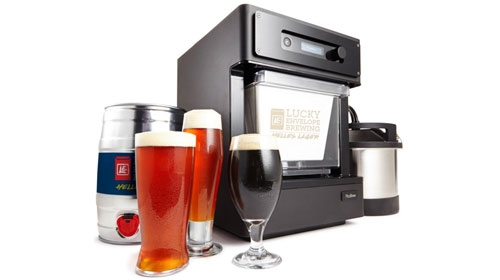




















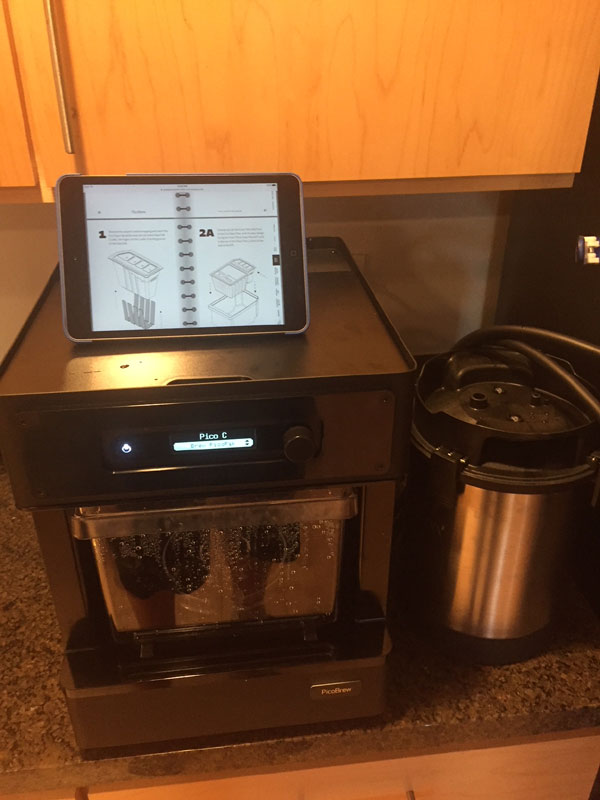







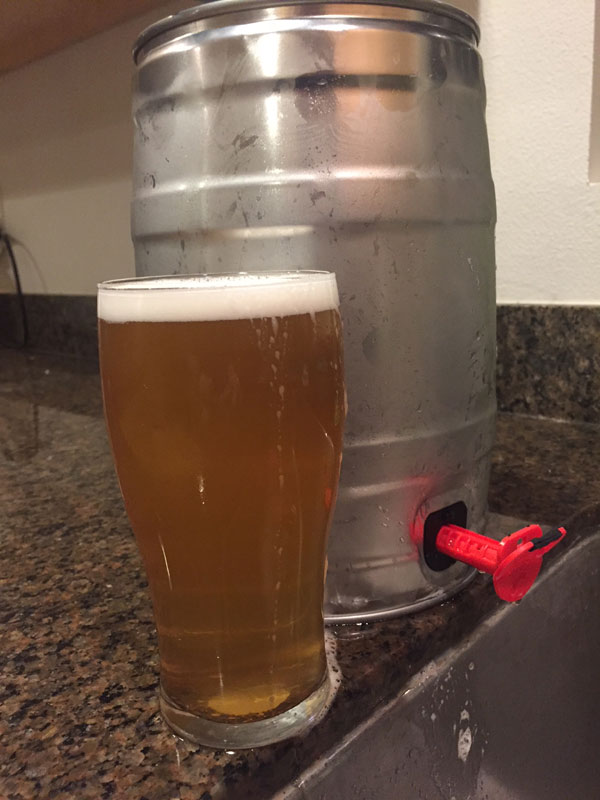
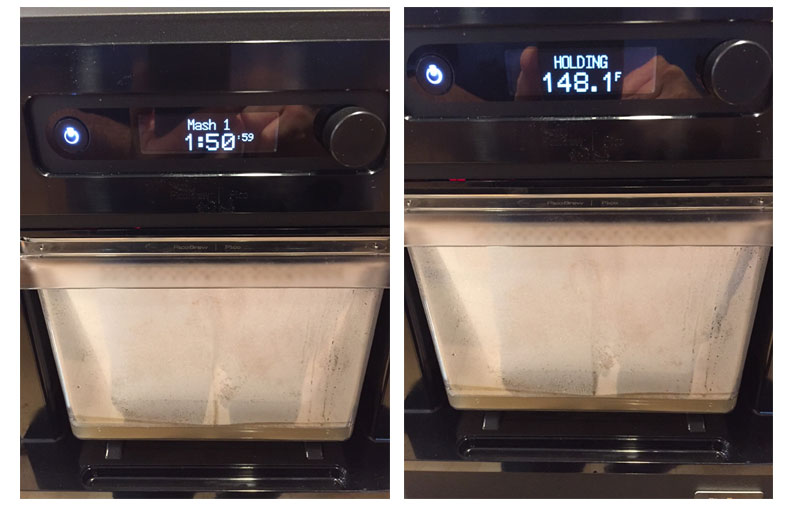





As a long time homebrewer and a owner of the Pico somatic and the model s (like the C) I find them game changing. Beer wise, the facebook community page has allot of tips and tricks. One is using less yeast or liquid to make better beer. Also, Pico has specials quite often, lowering the price per pint case.